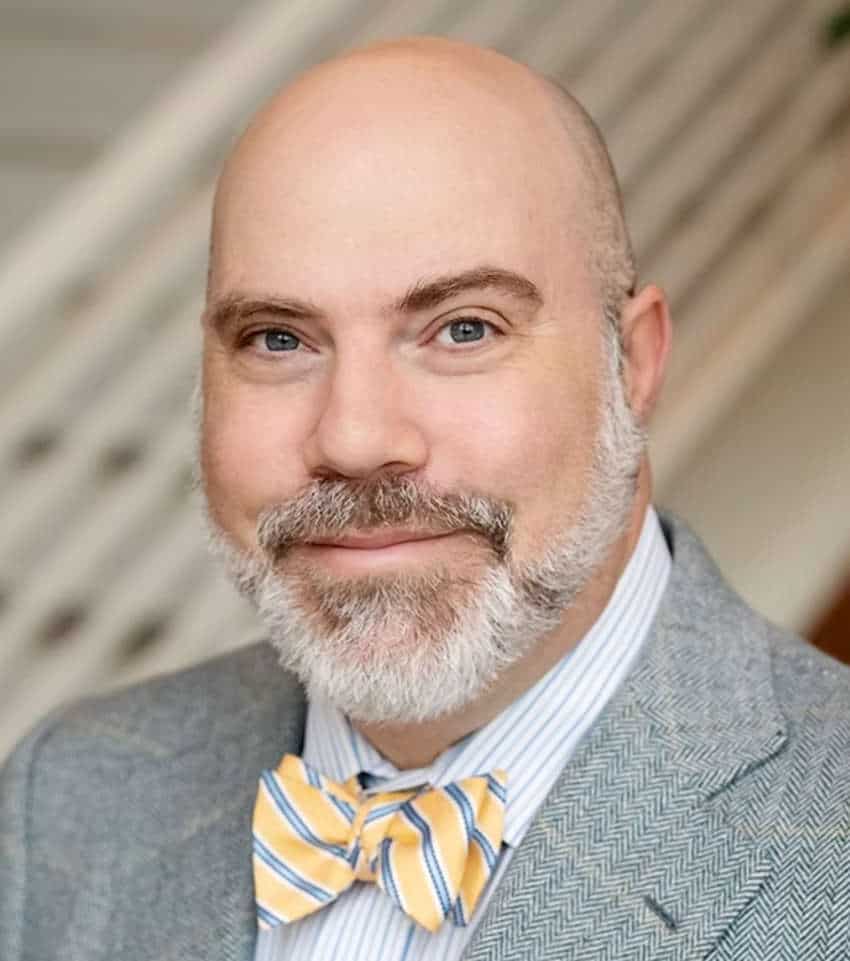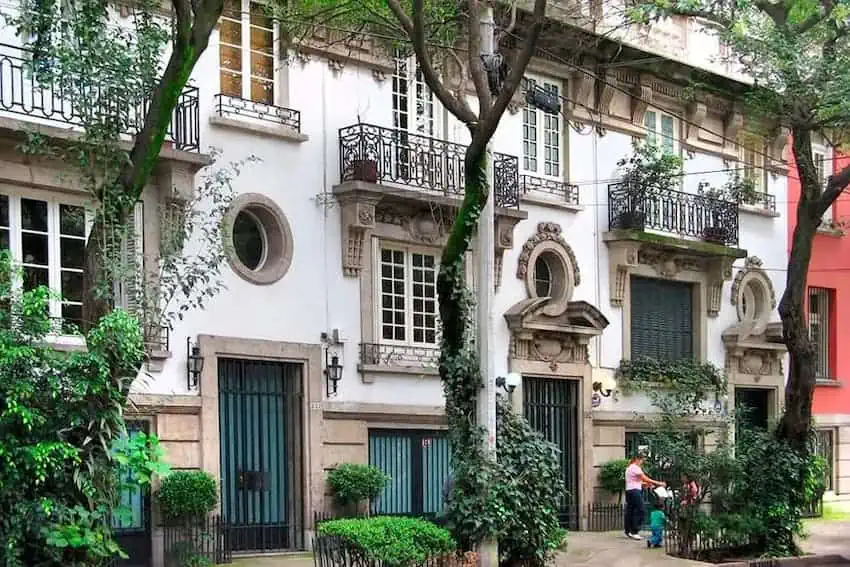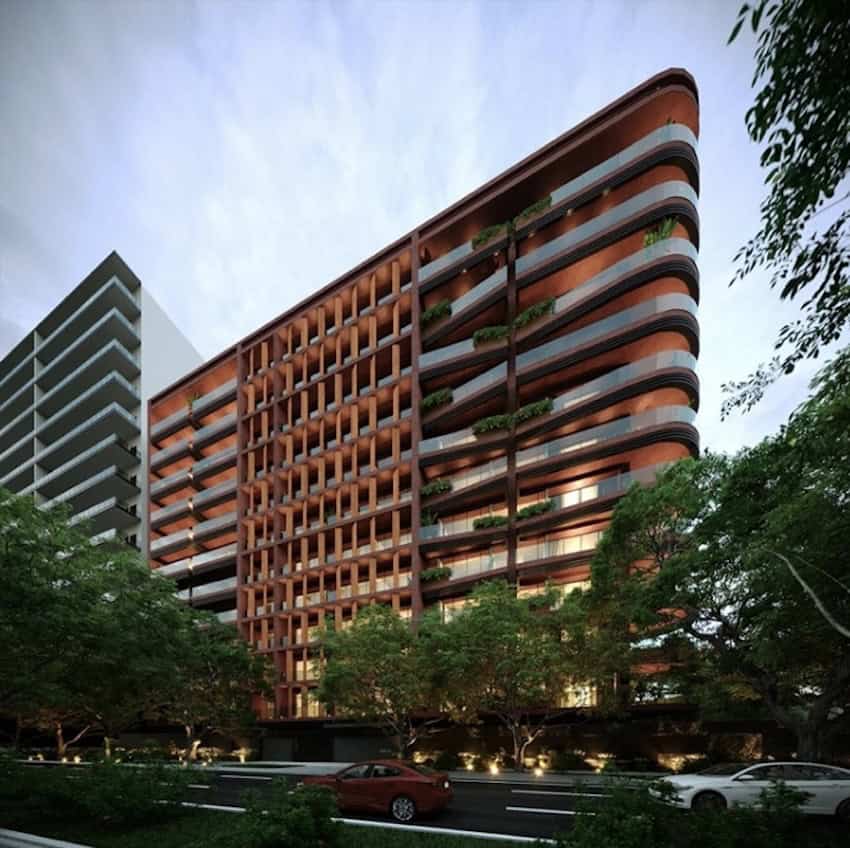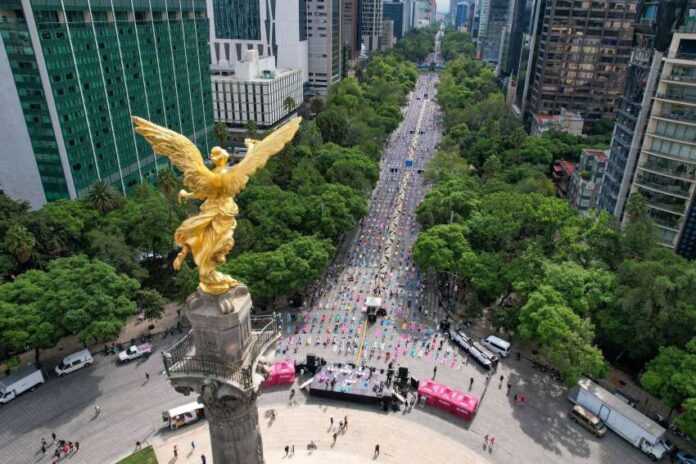Have you ever thought about moving to Mexico City after spending a few weeks there? I am guilty of this every time I land in Benito Juárez International Airport and start venturing to my favorite go-to spots in Condesa, Roma Norte, the Historic Center and in the area around Interlomas, where my family lives.
But anyone who’s been to Mexico City knows that it’s bigger and more complex than you’d think. I am always surprised by how many beautiful neighborhoods, monuments and parks I pass in the taxi on my way to my grandmother’s house. It’s not enough to love the vibes of Mexico City if you want to live there. You have to put in the time and effort to learn about what makes it unique and what boroughs and neighborhoods speak to you as a temporary or permanent resident.

After my conversation with Dr. Benjamin Bross, a local Mexican architect, I learned that it’s important to understand Mexico City architecture before you can dive into engaging with the real estate market.
Dr. Bross currently teaches at the University of Illinois and is the author of the 2022 book “Mexico City’s Zócalo: A History of a Constructed Spatial Identity.” He’s been a licensed architect for 30 years and has over 75 projects in eight countries under his belt. Not only is he a force in the Mexican architecture community, but his knowledge is invaluable.
“Mexico City is built in the same pattern as many Latin American cities in that you can read the structure of various neighborhoods and understand the design philosophies of different generations that have come and gone,” Dr. Bross told me. “It’s polycentric from an architectural point of view, meaning every neighborhood in Mexico City functions as its own center. It evolves over time while maintaining its distinct identity and soul.”
A great example of this is Condesa, which is the product of Mexico City architects’ adherence to the garden city movement, which started in the late 19th century with the English Urban planner Ebenezer Howard. Howard’s idea was to create areas that had a good balance of housing, work opportunities and green spaces, and in Mexico, his movement led to the birth of Parque México, Parque España and similar places where life and businesses thrive.
It’s a neighborhood that has a lot to offer and carries history at every corner. It’s personally where I like to stay whenever I find myself in Mexico City, and it turns out this is a mutual feeling I shared with Dr. Bross when we started diving into real estate.
“Condesa would be my first choice in terms of places I’d live in because it is very walkable. It’s rich in experiences, restaurants, art galleries and culture,” Dr. Bross told me.

“You see [that] the garden movement’s influence works well here if you look closely, and it’s the reason I believe [Condesa] attracts both locals and foreigners. You see old and young couples, corporate professionals and retirees inhabiting the same places. Small cafes, restaurants and food stalls are embraced by their community and give Condesa a little more color. It’s just a neighborhood that’s so alive.”
Dr. Bross also noted that Contadero, in the borough of Cuajimalpa, would be another great choice for those looking for a quieter neighborhood to call home in Mexico City that’s less known among tourists. It’s a beautiful, rural area near the forest and the Sierra de las Cruces mountains. It feels like a small town within a big city, but it’s also quite accessible to modern areas like Parque La Mexicana and the Santa Fe shopping center.
The more I learn about Mexico City, the more I log onto real estate sites to dream about what kind of apartment or neighborhood I’d like to someday call my forever home. But as Dr. Bross informed me, it’s crucial to know what you’re signing up for beforehand.
“Real estate can be complicated in Mexico for those who are not from there. It’s important that you try to understand how ownership works before you purchase anything. That’s my first piece of advice,” Dr. Bross said. “The good news is that it’s very possible to buy real estate successfully even if you don’t hold Mexican citizenship, but do your homework and be sure to seek insight from a real estate advisor or a lawyer.”
“I’d also say not to buy a place in Mexico City thinking it’ll be a safe investment. The Mexican real estate market isn’t as predictable as the American one, where you can follow economic cycles and know how they work.”
“Governments and laws can change really quickly, and if you’re not prepared for that reality, it can cause unwanted stress if you hope to make a good return with your investment in the event you want to rent out your apartment and gain passive income. If you’re going to buy an apartment or a house, be sure it’s primarily for you to have a place of residence and not a cash cow.”

Now, with the recent protests in Mexico City against gentrification, Dr. Bross’s honest advice rings true. And he also argues that Mexico is a victim of its own success due to the way it built up neighborhoods like Condesa, Roma Norte and Coyoacán to be great places to call home, only to encounter unexpected issues due to the high costs of living that developed there.
However, Mexico City’s architecture community is still thriving in modern times and bringing forth new and exciting masterpieces that’ll likely continue to build on its polycentric reality and help maintain Mexico City’s creative heartbeat.
Torre Monarca, Dr. Bross’s latest project in Mexico City, is a residential building in the Polanco neighborhood, located in front of the Canadian embassy. It’s designed to represent the monarch butterflies found in Chapultepec Park and to give each tenant their own unique sense of place in the capital, whether they live on the top or bottom floor. It’s also meant to integrate tenants with Chapultepec Park, one of Mexico City’s most important sites.
Torre Monarca, which Dr. Bross hopes will become an urban landmark, is one of several projects being planned every day that aspire to feed into Mexico City’s cultural makeup. This constant aspiration is the reason I believe Mexico City is a notable standout in modern architecture and will continue to attract expats and inspire everyday people all over the world.
Ian Ostroff is an indie author, journalist and copywriter from Montreal, Canada. You can find his work in various outlets, including Map Happy and The Suburban. When he’s not writing, you can find Ian at the gym, a café or somewhere in Mexico visiting family and friends.
